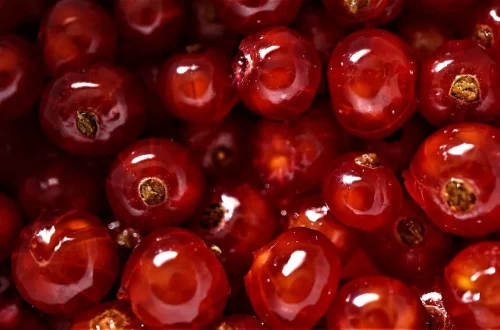
Choosing the Best Coral for Your Fish Tank Setup
Setting up a beautiful and thriving fish tank is not just about choosing the right fish; it also involves selecting the perfect corals to enhance the aquatic environment. Coral reefs are vibrant ecosystems that play a crucial role in marine biodiversity, and replicating these stunning habitats in an aquarium adds both aesthetic appeal and functional benefits. Corals provide shelter, breeding grounds, and food sources for various marine species, making them an essential component of a well-balanced aquarium setup.
In recent years, the popularity of reef aquariums has surged, leading hobbyists to explore diverse coral species to create their underwater paradises. From soft corals with flowing tentacles to hard corals that form intricate structures, each type offers unique characteristics and requirements. Understanding these differences is vital for ensuring the health and longevity of both the corals and the fish you choose to keep. Moreover, the proper selection of corals can significantly influence the overall water quality, lighting, and tank conditions.
As you embark on this exciting journey of creating a marine ecosystem, it’s essential to consider several factors when choosing the best coral for your fish tank. This includes understanding the compatibility of corals with your fish, the specific care requirements of different species, and how to create an environment that mimics their natural habitat. With careful planning and knowledge, you can establish a stunning aquarium that showcases the beauty of coral reefs while providing a healthy living space for your aquatic inhabitants.
Understanding Coral Types and Their Needs
Corals can be broadly categorized into two main types: soft corals and hard corals. Each type has distinct characteristics and care requirements, making it essential for aquarium enthusiasts to understand these differences before making a selection.
Soft corals, such as leather corals and mushroom corals, are generally easier to care for and are more forgiving of less-than-ideal water conditions. They are often characterized by their flexible and flowing bodies, which can sway in the water current. These corals also tend to grow faster than their hard counterparts, making them an appealing choice for beginners. However, they still require specific lighting and water flow conditions to thrive.
On the other hand, hard corals, including stony corals like Acropora and Montipora, are more complex and require stable water parameters, including calcium and alkalinity levels, to build their calcium carbonate skeletons. These corals tend to grow more slowly and can be more sensitive to changes in their environment. They often require intense lighting and strong water movement to maintain their health and color vibrancy.
When choosing corals for your aquarium, consider your experience level and the specific conditions of your tank. Beginners may find soft corals to be more manageable, while advanced aquarists might enjoy the challenge of keeping hard corals. It’s also essential to research the specific needs of each coral species, including their ideal water temperature, pH levels, and lighting requirements.
In addition to understanding the types of corals, you should also consider the compatibility of your chosen corals with the fish and invertebrates in your tank. Some fish, like certain species of butterflyfish, may nip at corals, causing damage. Therefore, ensuring a harmonious environment is crucial for the success of your aquarium.
Creating the Ideal Environment for Corals
The success of corals in your aquarium is heavily dependent on the environment you create for them. Corals require specific water conditions, lighting, and placement to thrive. First and foremost, maintaining stable water parameters is essential. This includes monitoring salinity, temperature, pH, and levels of nitrates and phosphates. Regular water changes and proper filtration will help keep these parameters within the required ranges.
Lighting is another critical factor in coral care. Most corals require specific light spectra to perform photosynthesis, which is vital for their growth and health. For instance, many hard corals benefit from high-intensity lighting, such as metal halide or LED lights, which can provide the necessary light spectrum for their photosynthetic symbionts, known as zooxanthellae. On the other hand, soft corals may thrive under lower light conditions, making it essential to choose lighting that matches the needs of your specific coral species.
Water movement is equally important for corals. Proper water flow helps to deliver nutrients and remove waste products, promoting healthy growth. Too much flow can stress some corals, while inadequate flow may lead to stagnation. It’s advisable to observe how your corals respond to water movement and adjust your filtration and circulation accordingly.
Lastly, the placement of corals within your aquarium is crucial. Some corals prefer to be placed higher in the tank, where light intensity is greater, while others thrive in lower light conditions. Additionally, consider the growth patterns of the corals you choose; some may spread out and require more space, while others may remain compact. Arranging your corals thoughtfully will not only enhance their health but also create a visually appealing display.
Selecting Compatible Fish for Your Coral Reef
One of the most exciting aspects of setting up a reef aquarium is choosing the fish that will inhabit your coral environment. However, selecting compatible fish is crucial to maintaining a harmonious ecosystem. Some fish species are known to be reef-safe, while others may pose a threat to corals.
When planning your fish selection, consider the behavior and dietary habits of different species. For example, many reef-safe fish, such as clownfish, gobies, and certain wrasses, coexist peacefully with corals, often enhancing the tank’s overall health by consuming algae and parasites. These fish help maintain a balanced ecosystem, preventing harmful algae blooms that could smother corals.
Conversely, certain fish, like tangs and butterflyfish, may exhibit coral-nipping behavior. This can lead to significant damage or even death of corals. It’s essential to research the compatibility of the fish species you are considering with the specific corals you have in your aquarium. Online forums, books, and local aquarium clubs can provide valuable insights into which species are known to coexist well in reef tanks.
The size of your fish is also an important consideration. Larger fish may disturb or damage smaller corals, especially during feeding or swimming. Striking a balance between the size and number of fish in your tank is vital for maintaining a peaceful environment, allowing both fish and corals to thrive.
Lastly, always acclimate new fish slowly to your aquarium to minimize stress and prevent shock. A proper acclimation process can significantly increase the chances of your new inhabitants adjusting well to their new environment. By choosing the right fish and ensuring compatibility with your corals, you can create a vibrant and dynamic underwater world.
Maintaining Coral Health and Stability
Once you have selected your corals and fish, the next step is to focus on their maintenance to ensure a thriving aquarium. Regular monitoring and care are essential for the health and stability of your marine ecosystem.
Start by establishing a routine for testing water parameters. Regularly check the levels of calcium, alkalinity, pH, and other essential parameters to ensure they remain stable. Sudden fluctuations can be detrimental to corals and fish, leading to stress or even death. Utilize high-quality test kits to obtain accurate readings and make adjustments as necessary.
Feeding corals is another aspect of their care that should not be overlooked. While many corals derive energy through photosynthesis, they also benefit from additional feeding. Offering specialized coral foods can provide essential nutrients that promote growth and vibrant coloration. It’s important to research the dietary needs of the specific coral species you have, as some may prefer particulate foods, while others thrive on liquid supplements.
In addition to feeding and water testing, regular maintenance tasks such as cleaning the tank, removing detritus, and trimming overgrown corals are crucial for a healthy aquarium. Algae can quickly become a problem if not managed properly, so consider introducing herbivorous fish or invertebrates that can help keep algae in check.
Finally, always be observant of any changes in your corals or fish behavior. Signs of stress, such as discoloration, retraction, or increased mortality, can indicate underlying issues that need to be addressed promptly. By staying proactive in your aquarium maintenance, you can create a thriving environment that showcases the beauty of coral reefs while ensuring the health of your aquatic inhabitants.
In conclusion, setting up a successful coral aquarium requires careful planning, understanding, and commitment. By choosing the right types of corals and fish, creating an ideal environment, and maintaining stable conditions, you can enjoy the beauty of a vibrant coral reef right in your home. Remember that patience and ongoing learning are key components of this rewarding hobby.
**Disclaimer:** The information provided in this article is for educational purposes only and should not be considered medical advice. Always consult a healthcare professional for any health-related concerns or conditions.




